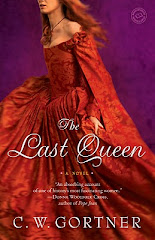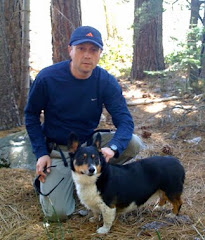Please join me in welcoming Mary Sharratt.
Hildegard the Healer by Mary Sharratt
Hildegard von Bingen (1098–1179) was a visionary Benedictine
abbess and polymath. She composed an entire corpus of sacred music and wrote
nine books on subjects as diverse as theology, cosmology, botany, medicine,
linguistics, and human sexuality, a prodigious intellectual outpouring that was
unprecedented for a 12th-century woman. Her prophecies earned her the title
Sybil of the Rhine. Eight hundred and
seventy-three years after her death, Hildegard was canonized in May 2012. On
October 7, she was elevated to Doctor of the Church, a rare and solemn title
reserved for theologians who have significantly impacted Church doctrine.
But Hildegard was also a physician and healer who developed her own highly original style of medical treatment and holistic dietary philosophy. Saint Benedict of Nursia (480-543), the founder of her order, expressly forbade the study of medicine, which in his era derived solely from texts written by pagans such as Hippocrates and Galen. Benedict believed that prayer alone must suffice in healing Christians.
By Hildegard’s time, monasteries had become centers of
healing and embraced the medical knowledge of the Classical pagan world along
with the pioneering work of the Arab and Persian physicians. Nearly every
monastic house had its own infirmary, hospice, apothecary, and medicinal
garden. Hildegard would have had ample opportunity to train as a physician and
apothecarer at Disibodenberg Monastery, a double monastery housing both monks
and nuns, where she had lived since the age of eight.
 |
| Author photo by Anne Bullen |
In his essay, “Hildegard’s Medicine: A Systematic Science of
Medieval Europe,” Kevin Anthony Hay suggests that Hildegard trained as an
infirmarer at Disibodenberg under the guidance of a senior monk before she
later took charge of the infirmary. After she and her nuns left Disibodenberg
to found their own community at Rupertsberg, she wrote Causae et Curae, her
main medical text, possibly so the new infirmarer at Disibodenberg could
benefit from her knowledge and expertise. When designing the new abbey at
Rupertsberg, Hildegard made sure to include a medicinal steambath. People
throughout her region came to Rupertsberg to receive healing.
In the Middle Ages, women freely practiced the medical arts.
The School of Salerno, the first medieval European medical school and the
epicenter of Western medical science, included both women instructors and
students. One such instructor was the 11th century Trotula whose treatise on
women’s health that bears her name, de Trotula, was used for centuries after
her death. It was not until the mid- 16th century that European women were
formally forbidden to study and practice as physicians.
Hay believes Hildegard was unique among female practitioners
of her time because her medicine didn’t focus solely on female complaints and
also because she developed a systematic, scientific, and holistic understanding
of medicine that rivaled what was coming out of Salerno, even though she had
never received any formal university training. For Hildegard, medicine was an
integral part of her religious vocation. Her medicine mirrors her theology—she
believed that humans existed as the microcosm within the macrocosm of the
universe and, as such, mirrored the splendor of creation. But if one fell into
disharmony with the innate wholeness of creation, illness resulted. This could
be treated through rest, herbal cures, steam baths, a proper diet, and by
making one’s peace with the divine order. She identified precancerous states and developed herbal
remedies to treat them before the cancer could develop. Naturopathic doctors in
modern Germany still practice “Hildegard Medizin” and work with her dietary
philosophy. She was a big fan of spelt bread. She warned that water could be
unhealthy to drink and could cause illness, but that beer was most wholesome
and pleasing to God. She was credited for discovering the use of hops to
preserve beer.
If you are visiting Hildegard sites in Germany, be sure to
stop at the Hildegard Forum, just across the Rhine from the Saint Hildegard
Abbey in Eibingen. The Forum is run by religious sisters who offer outreach for
the public to learn more about Hildegard, particularly her philosophy of
holistic healing and nutrition. They manage a café and restaurant; offer
seminars and retreats; and maintain an orchard and a medieval-style herb
garden.
Illuminations: A Novel of Hildegard von
Bingen is published by Houghton Mifflin Harcourt and is a Book of
the Month and One Spirit Book Club pick. Visit Mary at her website.














4 comments:
I can't wait to read this one! I've enjoyed her previous works. This was a very interesting post!
I'd love to read this one though the possibility of it getting to this part of the world is so remote!!! the cover is to die for.
I won this book on Goodreads. It's very good, not too dry and very concise considering it spans 70+ years.
As a lover of historical fiction this really sounds good. I look forward to reading it.
Post a Comment